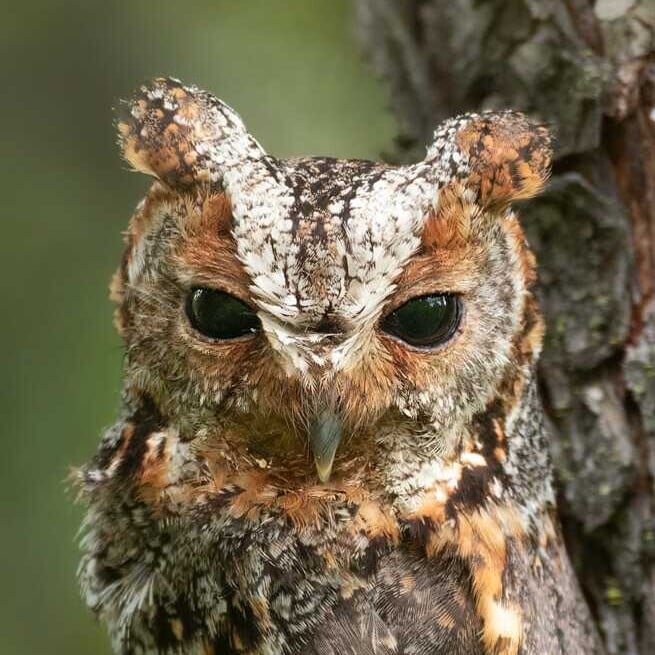Llusco, 39, is one of about 10 Indigenous female mountain guides in Bolivia. Her long black hair is tied in two plaits, linked with a large safety pin and wool decorations in red, yellow and green, the colours of the Bolivian flag. She is wearing a pollera, a voluminous floral skirt over layers of pink petticoats. She has paired it with a pink diamanté top, beneath a pink cardigan and a red fleece gilet. “I have never worn trousers to go up a mountain and I never will. Our polleras don’t impede us,” she says of the traditional Aymara garment.
She has been climbing Huayna Potosí for most of her life, but on 17 December 2015 she was part of a group of 11 women who made it to the summit. They called themselves the cholitas escaladoras (the climbing cholitas) and they made headlines when they scaled more peaks in the Cordillera Real. The word cholita comes from chola which was previously used as a pejorative term for indigenous Aymara women.
Huayna Potosí is one place she keeps returning to that fills her with joy. “I feel free, so happy, as if I’m escaping and the mountain is calling me. I’m also in love with nature,” she says. Minutes later, a condor, a national symbol of Bolivia and the largest bird of prey in the world, cruises overhead.
Our polleras don’t impede us
I’m glad for that, because looking at it I would be 100% terrified at that catching on something or something equally horrific in a bad scenario.
… but I’m also not a mountain climber, and I wouldn’t brave it even in trousers, so my risk assessment is definitely very different, lmao.
I’ve always preferred skirts to pants, precisely because they’re less restrictive to movement. I’m not sure why, but the comment was always, “I’m not sure you’d be able to do this while wearing a skirt.” It seems like people who haven’t worn them habitually don’t know how they work.
Worst case: I fall down and you can see my knickers. Well that’s why I wear the knickers. And in nearly a half-century, I can think of maybe 2 times that’s happened. Both times I was sprinting madly to catch a bus and both times were due to my shoes and/or bad decisions.
Field hockey and lacrosse are both traditionally played in kilts.
Some other objections:
Need to don some Tyvek coveralls for work? It’s really no problem with a basic skirt. You just hike it up a bit. Those suits are baggy and everything fits. You also avoid the discomfort of two layers of leg fabric.
Cold weather? Tights are great, as are thigh high socks. And boots. All of these also look cute.
Oh, and packing for vacation? I can pack 3-4 skirts for every pair of jeans. It’s just a simple cloth tube which folds down to nothing.
You’re really selling me on skirts here…
Interesting story. It sounds like it’s tough to be part of the indigenous population, and also tough to be a woman there.
Nice to see them persevering through all of that.
Very inspiring article, thank you for sharing!
Never wears trousers, but has leggings under her skirt shown in the article’s thumbnail. 🙄
Then don’t look.
Lol there’s literally a photo of it in the thumbnail, he’s not wrong
The Guardian - News Source Context (Click to view Full Report)
Information for The Guardian:
MBFC: Left-Center - Credibility: Medium - Factual Reporting: Mixed - United Kingdom
Wikipedia about this sourceSearch topics on Ground.News
Why is this an article?
Because it is interesting from a woman’s perspective on climbing.
Please feel free not to read it.
Seems like the wrong community, it would fit better in uplifting news or something like that
It is interesting, although the headline makes it think this is more about some sexist dress code, so they could have sold it as an article better.
It’s not news
Then don’t read it.
Is that your only excuse? Weak af tbh
What’s your excuse for rattling on about your opinion?
Goodbye kid
👋
Interesting indeed…
I would be much nicer to hear the struggles or achievements about being a climber as a woman, rather then fashion choices which have nothing to do with climbing. This just backs up stereotypes and gives the wrong impressions but whatever…
Llusco and her fellow Aymara guides are changing the face of tourism, traditionally a male-dominated industry. She has done two entry-level mountaineering courses and wants to travel abroad to do more advanced studies.
“At first it was hard, the men looked at me strangely, like I didn’t belong,” she says. “Still now, there are often times when I’m the only woman, or one of very few, working on the mountain.”
Bolivia’s Indigenous population has seen greater recognition since Evo Morales served as the country’s first Indigenous president between 2006 and 2019, but it is not an easy place to be a woman; in 2021, the country had one of the highest rates of femicide in South America. “It has been very difficult for me, and the whole group, to face the sexism and discrimination we’ve had to go through,” says Llusco. “We have stumbled because we are women who wear polleras.
“But we also have support that encourages us to keep going. Together, we are stronger. We support each other and teach our children to follow in our footsteps.”
The cholitas escaladoras are part of a wider movement, which has been fighting for their rights since at least the 1960s, that also includes the cholitas luchadoras (the wrestling cholitas) and the cholitas skaters.
The cholitas escaladoras, which have now splintered into three groups, have received worldwide attention for their achievements.
This is why you can’t go by a headline or the article summary…sometimes you actually need to read the article. It isn’t about the clothes whatsoever.
She’s discriminated against for being a woman, a native person, someone who speaks the “wrong” language, wears the “wrong” clothes, and gets hated on just for being herself or for enjoying the things she does, in the way she wants to do them.
She’s concerned for the great environmental collapse of her homeland. She wants her peoples’ traditions to carry on to the future. She wants people like her to be proud and enjoy life in their way.
Her and her friends are doing things most people can’t do with all their fancy high tech gear, and they’re doing it in their daily wear, but they still get hated on for it.
That’s why they have articles and movies about them and the rest of us don’t. If you can’t find something inspiring that you’d be proud of a person for in this article, I don’t think the issue is the author or the subject matter. It’s a really good article in my opinion.





